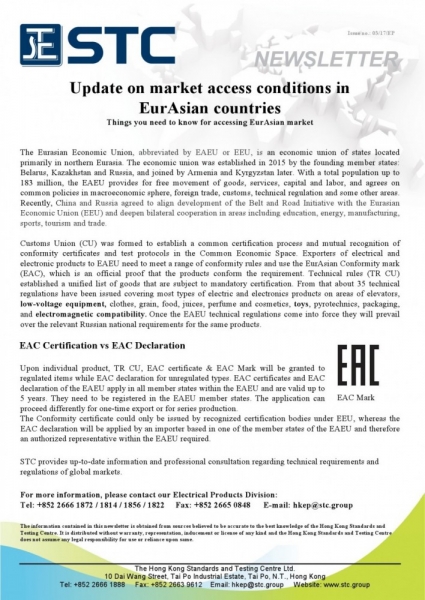
Update on market access conditions in EurAsian countries: Things you need to know for accessing EurAsian market
The Eurasian Economic Union, abbreviated by EAEU or EEU, is an economic union of states located primarily in northern Eurasia. The economic union was established in 2015 by the founding member states: Belarus, Kazakhstan and Russia, and joined by Armenia and Kyrgyzstan later. With a total population up to 183 million, the EAEU provides for free movement of goods, services, capital and labor, and agrees on common policies in macroeconomic sphere, foreign trade, customs, technical regulation and some other areas. Recently, China and Russia agreed to align development of the Belt and Road Initiative with the Eurasian Economic Union (EEU) and deepen bilateral cooperation in areas including education, energy, manufacturing, sports, tourism and trade. Customs Union (CU) was formed to establish a common certification process and mutual recognition of conformity certificates and test protocols in the Common Economic Space. Exporters of electrical and electronic products to EAEU need to meet a range of conformity rules and use the EurAsian Conformity mark (EAC), which is an official proof that the products conform the requirement. Technical rules (TR CU) established a unified list of goods that are subject to mandatory certification. From that about 35 technical regulations have been issued covering most types of electric and electronics products on areas of elevators, low-voltage equipment, clothes, grain, food, juices, perfume and cosmetics, toys, pyrotechnics, packaging, and electromagnetic compatibility. Once the EAEU technical regulations come into force they will prevail over the relevant Russian national requirements for the same products.
[See PDF version for more information]










